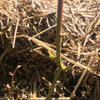Concerns about RRD
lavender_lass
13 years ago
Related Stories

FUN HOUZZGuessing Game: What Might Our Living Rooms Say About Us?
Take a shot on your own or go straight to just-for-fun speculations about whose homes these could be
Full Story
HEALTHY HOMEWhat to Know About Controlling Dust During Remodeling
You can't eliminate dust during construction, but there are ways to contain and remove as much of it as possible
Full Story
WORKING WITH PROSWhat Do Landscape Architects Do?
There are many misconceptions about what landscape architects do. Learn what they bring to a project
Full Story
GARDENING GUIDESNew Ways to Think About All That Mulch in the Garden
Before you go making a mountain out of a mulch hill, learn the facts about what your plants and soil really want
Full Story
GREEN BUILDINGWhat's LEED All About, Anyway?
If you're looking for a sustainable, energy-efficient home, look into LEED certification. Learn about the program and its rating system here
Full Story
LIFEHouzz Call: What Has Mom Taught You About Making a Home?
Whether your mother taught you to cook and clean or how to order takeout and let messes be, we'd like to hear about it
Full Story
FURNITUREHow to Buy a Quality Sofa That Will Last
Learn about foam versus feathers, seat depth, springs, fabric and more for a couch that will work for years to come
Full Story
MATERIALSInsulation Basics: What to Know About Spray Foam
Learn what exactly spray foam is, the pros and cons of using it and why you shouldn’t mess around with installation
Full Story
LIGHTINGWhat to Know About Switching to LED Lightbulbs
If you’ve been thinking about changing over to LEDs but aren't sure how to do it and which to buy, this story is for you
Full Story
KITCHEN SINKSEverything You Need to Know About Farmhouse Sinks
They’re charming, homey, durable, elegant, functional and nostalgic. Those are just a few of the reasons they’re so popular
Full Story




karl_bapst_rosenut
anntn6b
Related Discussions
about rrd, would like ann's opine also
Q
New rose rosette newspaper article
Q
Not good news, at all...
Q
'Beverly Eleganza Returning'.....is this a new form of Beverly?
Q
jeannie2009
lavender_lassOriginal Author
lavender_lassOriginal Author
michaelg
kstrong
jeannie2009
diane_nj 6b/7a
lavender_lassOriginal Author
anntn6b
lavender_lassOriginal Author
anntn6b
hoovb zone 9 sunset 23
michaelg
carolinamary
hartwood
carolinamary
lavender_lassOriginal Author
lavender_lassOriginal Author
carolinamary
lavender_lassOriginal Author
anntn6b
lavender_lassOriginal Author
carolinamary
henry_kuska
catsrose
lavender_lassOriginal Author
vedazu
lainey2 VA
anntn6b
lavender_lassOriginal Author
henry_kuska
flaurabunda
lavender_lassOriginal Author
anntn6b
lainey2 VA
lavender_lassOriginal Author
anntn6b
lavender_lassOriginal Author